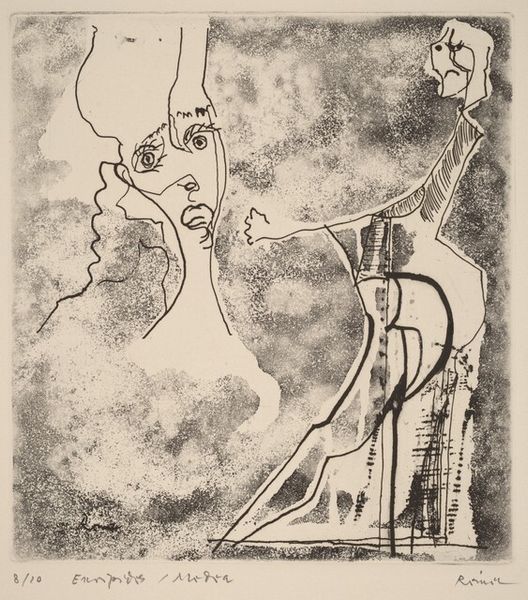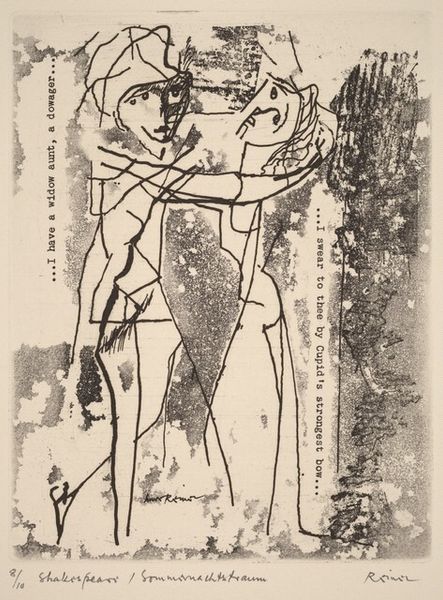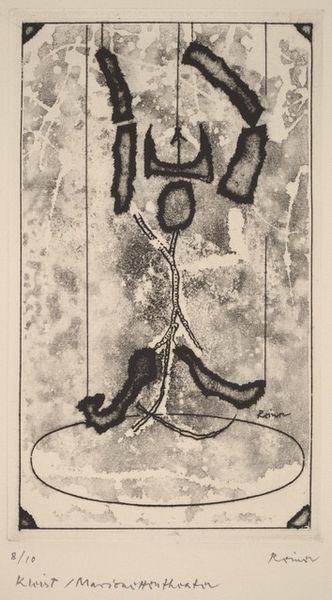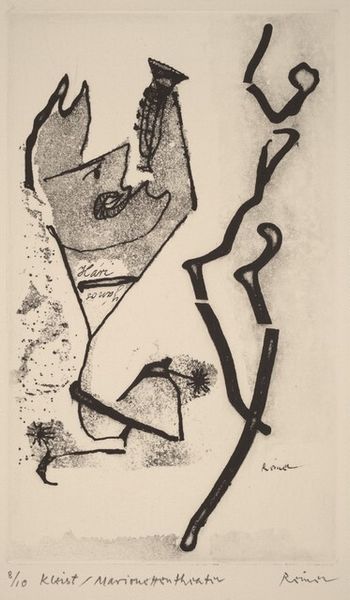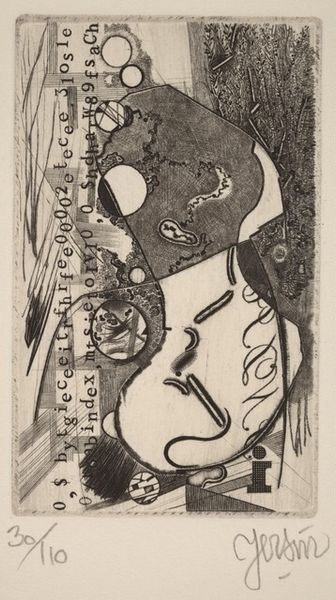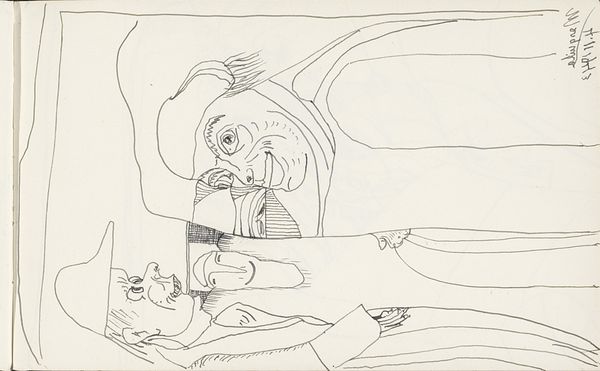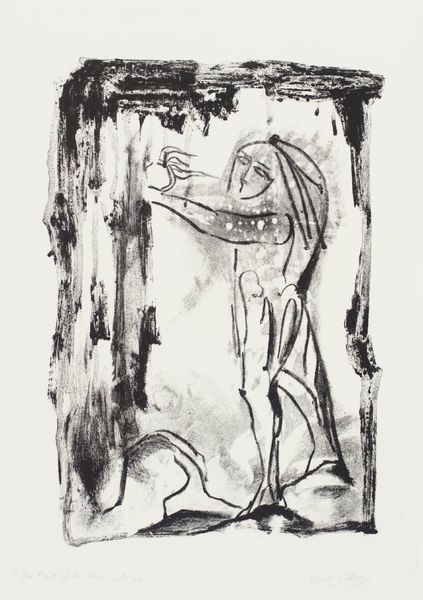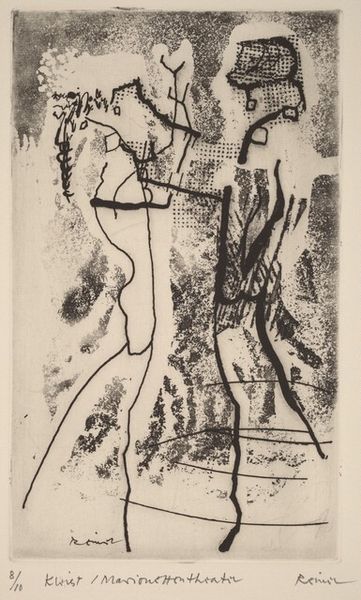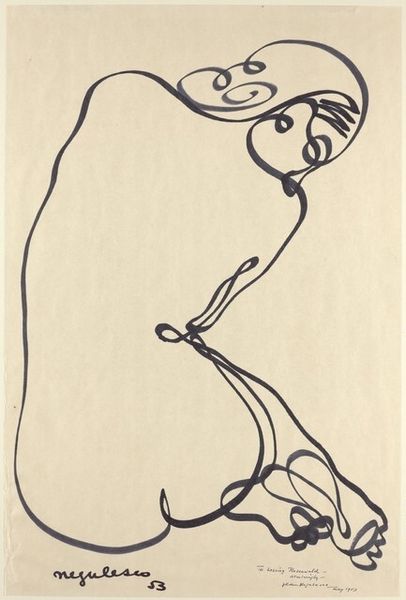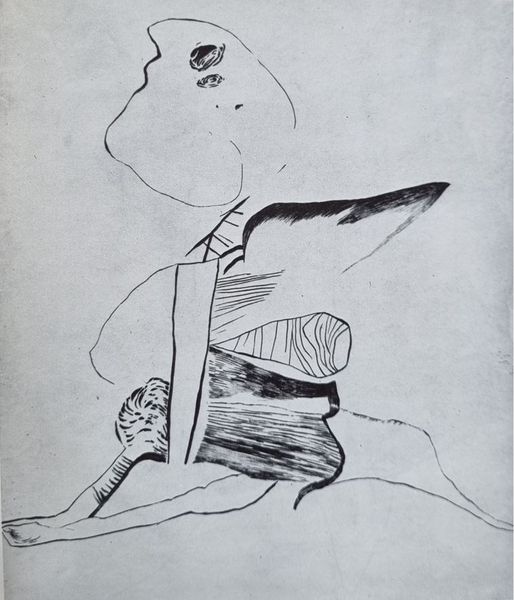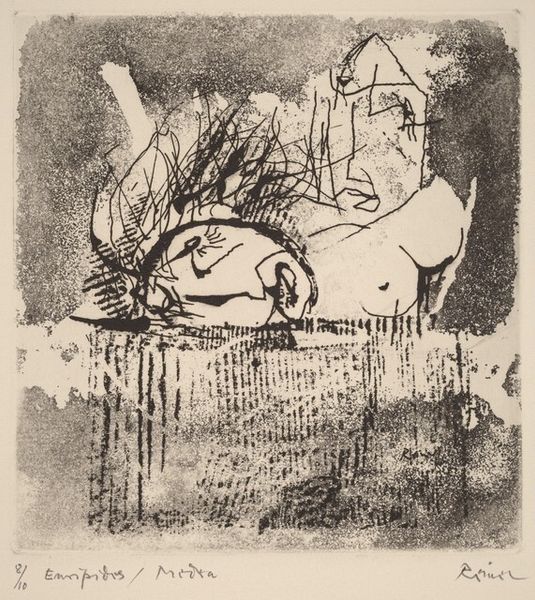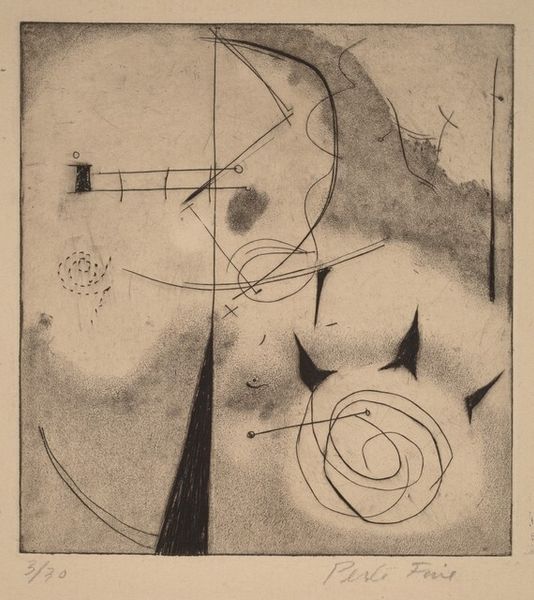
drawing, print, ink
#
drawing
#
ink drawing
# print
#
pen illustration
#
figuration
#
ink
#
modernism
Copyright: National Gallery of Art: CC0 1.0
Curator: Here we have Imre Reiner’s 1964 print, "Euripides/Medea," an ink drawing that feels immediately… volatile. Editor: Volatile, yes, but also intensely sad. The rough texture almost feels like she's emerging from smoke and mirrors. What's striking is that despite the minimalist linework, the raw emotion is palpable. Curator: It's fascinating how Reiner has used such limited materials—just ink on what seems to be paper—to convey such complexity. You can practically feel the weight of her decisions, etched into the plate and then pressed onto the surface. The drama lies not just in the subject matter, but also in the very process. Editor: Exactly. Look at the crude expressiveness of the lines depicting Medea; the gestural energy shows how she's fighting her fate and the horror of the play’s central dilemma, her unspeakable response to betrayal. Curator: Absolutely. And the figures peering down seem to be judgement incarnate. Perhaps society’s judgement of women outside their prescribed role? It all comes together with the textural qualities of ink as a medium. Editor: Reiner was part of the modernist movement in graphic design. He pushed boundaries between design and fine art, seeing printmaking and calligraphy not just as crafts, but powerful modes of expression with profound social and political implications. Curator: The mark-making certainly does feel like the furious energy and passion that comes from the titular Greek play, Euripides' *Medea*. Editor: Thinking about Medea— a barbarian woman wronged and rejected in a patriarchal society —Reiner may be asking us to think about societal forces. Medea isn’t acting alone; she’s trapped in a matrix. The image here seems less about character and more about these brutal conditions of gender and displacement. Curator: A vital interpretation. What starts as a fairly simple, emotive piece slowly reveals layered complexities of identity, gender and circumstance. The more one looks, the more nuanced the image becomes, drawing us back again and again to this brutal and timeless story. Editor: Absolutely. By focusing on process and those expressive raw materials, we start to untangle something much deeper than just surface representation, hopefully challenging us to interrogate the structures in which narratives, even tragic ones, emerge.
Comments
No comments
Be the first to comment and join the conversation on the ultimate creative platform.

